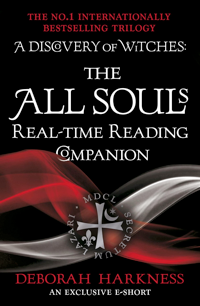The Metropolitan Museum of Art is full of praise and admiration for Rudolf. Quote from the Met: "Prague became, under Rudolf's guidance, one of the leading centers of the arts and sciences on the continent. His taste for outstanding decoration and fantastic imagery were legendary, while his ambition and insight as a patron and collector changed the way art would be viewed by future generations." If you talk to the art crowd, Rudolf wasn't such bad guy.
 |
| Vertumnus, a portrait depicting Rudolf II, Holy Roman Emperor painted as Vertumnus, the Roman God of the seasons, c. 1590-1. Skokloster Castle, Sweden. |
Rudolf accumulated thousands of paintings for his collection during his rule. In fact, when the Swedes seized Prague in 1648 their healthy plunder from Rudolph's castles included the following: 470 paintings, 69 bronze figures, several thousand coins and medals, 179 objects of ivory, 50 objects of amber and coral, 600 vessels of agate and crystal, 174 works of faience, 403 Indian curiosa, 185 works of precious stone, uncut diamonds, more than 300 mathematical instruments and many other objects. Harkness did not invent the red-headed paintings of Venus for the sake of artistic license. Rudolf actually owned such paintings! We've included a few from Spranger and Veronese for your viewing pleasure:
 |
| Mars and Venus United by Love Paolo Veronese (Paolo Caliari) (Italian, Venetian, 1528–1588) |
 |
| Bartolomeo Spranger, Venus and Adonis |
 |
| Barthomeus Spranger’s 1596 painting of Jupiter and Antiope |
He also set the standard for collecting. By establishing a "Cabinet of Curiosities" he would inspire generations of acquisitive, Victorian collectors. The name itself "Kuntstkammer" summarizes the theoretical concept of such rooms of art (Kunst) and marvels (Wunder). Any Kuntstkammer worth its salt would contain objects from the following categories: naturalia (products of nature), arteficialia (or artefacta, the products of man), and scientifica (the testaments of man's ability to dominate nature, such as astrolabes, clocks, automatons, and scientific instruments). Rudolf's Kunstkammer displayed an encyclopedic collection of all kinds of objects of dissimilar origin and diverse materials on a universal scale. In essence, your grandmother's tchotchke collection owes it's existence to good ol' Rudy!
 |
| Bezoar, c. 1600 |
 |
| Automaton with Diana on a Centaur Hans Jakob I. Bachmann | 1602-1606 | Photo ©: Kunsthistorisches Museum |
Here's one last AST "coincidence" to consider: The written inventory of Rudolf's collection, the only surviving record of his fabulous collection, is part of the Voynich* collection. Ha!
*The Voynich Collection
As always, here's a few ways to feed your daemons:
- Overview of Rudolfine Prague: http://www.metmuseum.org/toah/hd/rupr/hd_rupr.htm
- Kuntstkammer details: http://www.kb.se/codex-gigas/eng/Long/handskriftens/rudolf-ii/
- NYT article: The Art, Science and Lechery of Rudolf II
See you next time!

P.S. If you have something you'd like us to explore on Weekly Geek, contact us! You may find your curiosities addressed on one of our future geekly posts! If you enjoy our Weekly Geeks and/or our other regular features, you can subscribe and have our posts come straight to your inbox. No spam, promise! No post, no email. Simple as that, and you can unsubscribe at any time!



















